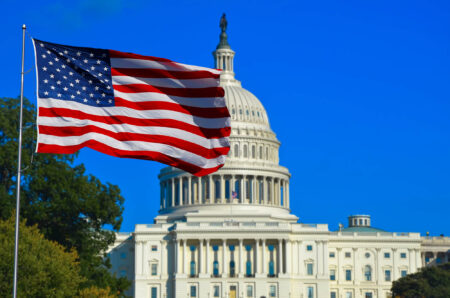The uncertain and volatile regulatory framework for crypto in the US has kept many entrepreneurs and investors away from this important capital market and has contributed to the success of innovative first-mover jurisdictions such as Switzerland and Singapore.
The lingering regulatory uncertainty has also limited the overall adoption and growth of crypto, and over the last few years, it has created a gap between the uncontroversial adoption of crypto that has been put forward by the major international standard setters and the US. What follows reviews the development development of crypto regulation in the US since 2017 and assesses the recent Presidential Executive Order – clarifying why it has a watershed nature.
Uncertain political stance
By 2020, the US suffered from a directionally unsettled policy stance on crypto and its intricate federal and state-based regulatory system. The states' decisions dominated most of the time, the Securities and Exchange Commission (SEC) dominated the Federal decisions and at the Congress was an inconclusive discussion. In the absence of a clear federal stance, individual states took their own positions on crypto, resulting in a mix of states supporting or opposing crypto. Authorities of a dozen of states including California and New Mexico issued warnings against investing in cryptocurrencies; others, like New York, passed laws that are generally considered restrictive. On the contrary, some states such as Wyoming, Colorado, Arizona, Nebraska, and Georgia promoted crypto by voting for very favorable regulations, often exempting cryptocurrencies from state securities laws and/or money transmission statutes.
During the same period, the Securities and Exchange Commission (SEC) was left alone in leading the discussion and taking the decisions at the federal level. The SEC’s position is that if a token is classified as a security, it must be registered with the SEC by the issuer or can be offered under an exemption from registration. During the Initial Coin Offering (ICO) hype during 2017-18, the SEC announced that a token issued in an ICO would be classified as security token, even if it has only utility functions. The SEC tracked several ICOs that were launched outside the US but targeting US consumers, determining for instance the discontinuation of the Telegram ICO and kicking off the pending case against Ripple.
Until 2020, the discussion at the federal level failed to produce a consensus, despite several attempts made to introduce clarifying bills, such as the Crypto-Currency Act (2020), which aimed to provide clarity and legitimacy to crypto assets, and the Digital Commodity Exchange Act (2020), proposing to endorse the Commodity Futures Trading Commission (CFTC) with the task to streamline all state-based regulatory requirements for US-based crypto exchanges under a single framework.
How to regulate crypto is still up for debate
During 2021around May the crypto market correction led to a rapid involvement of all federal financial and banking regulators and the Treasury Department in discussions around about the assessment and regulation of crypto markets. In the months following May 2021, the Federal Reserve System (Fed), the Office of the Comptroller of the Currency (OCC), and the Federal Deposit Insurance Commission (FDIC) began collaborating on the production of a joint regulatory framework for involving crypto. As a first step they made a review of crypto standards including interpretative letters and guidance regarding crypto and digital assets.
The SEC initiated measures to protect the investors on crypto exchanges – alluding to rules like those characterizing traditional exchanges such as the New York Stock Exchange or the Nasdaq. Prioritized from SEC was the work on crypto exchanges and Decentralized Finance (DeFi) and they called for crypto actors to work with regulators. By the end of 2021, it became clear that these agencies were expected to define how banks should act, and interact with, crypto services. One point was the issue guidelines applicable to the holding of crypto assets on the balance sheet and the issuance of global stablecoins. Also the extent to, and conditions under which, banks can provide custodial services or crypto trading services to their customers was mentioned. Thus, the range of permitted crypto activities and the expectations for safety and soundness, consumer protection, and compliance with existing laws and regulations would also be clarified.
In January, we expressed our expectation that 2022 would witness the creation of a federal, interagency and coherent framework capable of strengthening the market infrastructure, market conduct, and investor protection. We have clarified our expectation based on an organization of the roles of the different federal agencies and of the definition of some core areas of focus such as crypto exchanges, DeFi, global stablecoins, and the banks’ crypto exposures.
U.S. aims to become a leader in the crypto industry
The issuance of the Presidential Order on 9 March 2022 officializes the endorsement of the crypto industry by the US and its intention to be the global leader in the field. From a policy stance perspective, the executive order takes a supportive and sustainable approach, thus, recognizing the need to align the governmental approach to digital assets, the national interest in responsible innovation. One capable to expand access to safe and affordable financial services and to reduce the cost of domestic and international fund transfers and payments. In addition it acknowledges the need to protect consumers and investors as well as combating illicit finance and mitigating systemic risk.
The Order goes further and clarifies the objective of strengthening the leadership of the US in the global financial system and preserving the economic and national security benefits that are derived from the central role played by the USD and US financial institutions globally. This should be implemented through effective interagency coordination, involving the Treasury, Fed, SEC, CFTC, FDIC, and OCC. In an inclusive part, the Order also tackles the issue of CBDCs, prioritizing research and development. Aimed to display the leadership of the US and focused on ensuring privacy protection, transparency, connectivity, interoperability, and economic benefits in terms of reduced transaction costs and greater inclusiveness.
Gap and implementation analyses related to the topics discussed in the Order should take place during the next 180-210 days regarding CBDCs, 360 days concerning consumer and investor protection aspects, 210 days for financial stability risk, and the next 120 days in relation to illicit finance. Further the US will continue to support the G20 roadmap for improving cross-border funds transfers and payments, including the potential of well-regulated stablecoin arrangements, and related work by the Financial Stability Board (FSB) and by the FATF.
Cryptocurrency adoption may finally be on the rise
The recent Presidential Executive Order on Digital Assets constitutes a watershed episode in the history of crypto regulation in the US. It aligns the governmental approach to digital assets and promotes a supportive and sustainable approach clarifying the goal to reinforce the leadership of the US in the global financial system. It puts an end to the years characterized by an uncertain and volatile crypto regulatory framework that limited the overall adoption and growth of crypto over time and even created a gap between the clear-cut stance taken by the major international standard setters and the US.
Going forward, US crypto actors will be able to operate and plan within a much-enhanced regulatory and political environment, which is characterized by a clear-cut top-down, federal-wide, adoption plan - despite the details awaiting to be specified. In turn, the global crypto space will benefit from the political certainty and resoluteness that has emerged in the major capital market globally.








